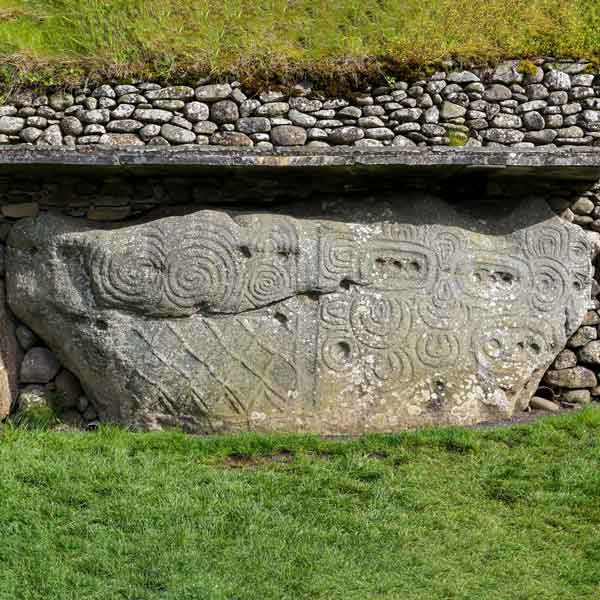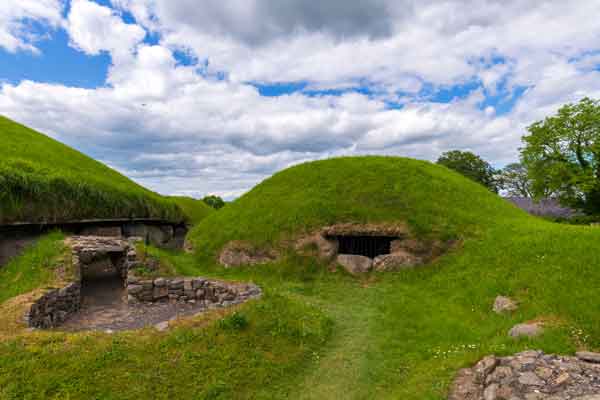Before the pyramids were built in Giza, the people of ancient Ireland built a sprawling complex of sophisticated burial mounds designed to be illuminated by the sun on specific days in the solar calendar. The most famous of these is Newgrange, with its famous chamber lit on the winter solstice. The iconic triple spiral carved into one of its 97 curbstones is so well-known now that it is hard to imagine that for centuries, it was buried and unknown.
Local people always knew that the mysterious mound, which covers about an acre of land, was man-made, but it lay untouched. People were superstitious about it. While they didn’t know exactly what was under the ground, the awareness that it was a sacred site where the dead were laid to rest was quietly passed through the generations. Local farmers could scarcely imagine that one day, the site would be so popular that tickets to the winter solstice would be available through a raffle and the designs hidden below ground would inspire and adorn Irish gifts from pottery to jewelry.
Today, Brú na Bóinne is a UNESCO heritage site with a visitors center and guided tours. But that center was only opened in 1997. The work of excavating the site took place between 1962 and 1975. The mound barely gets a mention in any documentation of land ownership until 1348. It was only in 1699, when a new owner took possession of the land, that the mound was disturbed. Early attempts at digging into the mound found human and animal remains, as well as beads. But the owner didn’t have his employees dig out of curiosity; he wanted to quarry stone at the site.
New Discoveries at Newgrange
The work of discovering and learning about the ancient complex in the Boyne Valley is ongoing. We know that much still lies below the surface, unseen, and we still do not completely understand the meaning and purpose of the chambers there. The building of the visitors’ center did not mean the end of the research!
Modern technology has given us new insights and unexpected glimpses of the enduring artistry of our ancestors. Drones have revealed views of the ground that indicate structures below that no one today knew were there.
While Newgrange, Knowth and Dowth have been explored and examined for decades now, a fourth chamber was only excavated in 2017. This one, which is smaller than the other three, is named Dowth Hall for the nearby 18th century mansion. Researchers have called it the most significant find in 50 years. Government-commissioned arial photography of the area revealed many more sites.
New photographic technology has also helped us see the ancient carvings on sites around Ireland more clearly. Structure from motion photogrammetry involves taking hundreds of high-quality images to create a 3-D model.
As modern technology evolves and we gain more insight and information about these ancient sites, we can only wonder what new motifs and designs will be uncovered – and how they will inspire more beautiful Irish gifts of jewelry, pottery and clothing.











